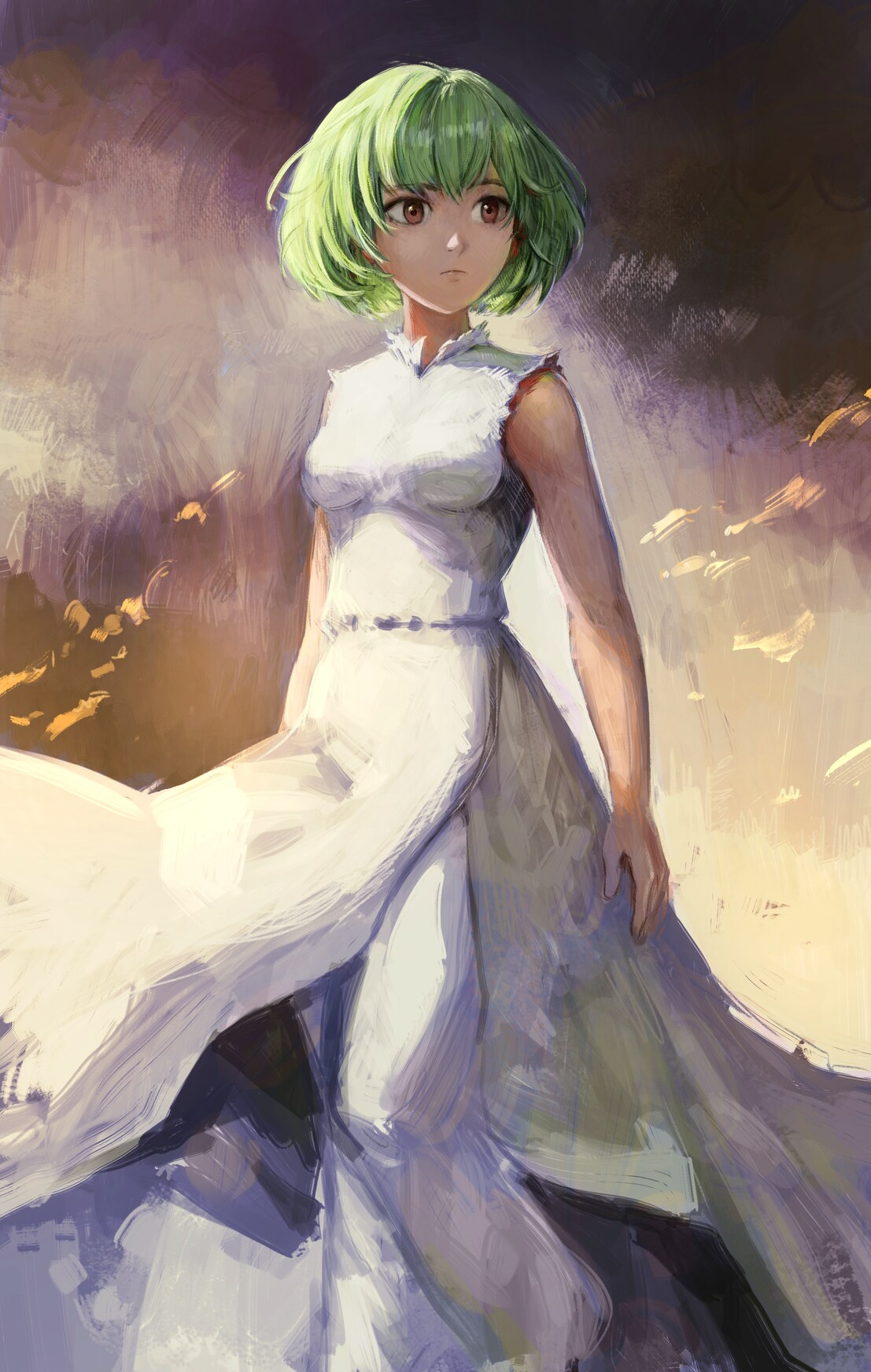My brushstrokes against AI-art
Picture above: concept art for episode 39 (click to enlarge).
A close-up of a piece of artwork showing Wasabi, but young.
A philosophical questioning
Recently, I've been browsing DeviantArt, ArtStation and other art platforms that have decided to empower AI artists, as if the recent and continuous enshittification of their platform wasn't strong enough.
But I have to say: AI-generated digital artworks are really improving and getting more and more things right: proportions, composition, even the number of fingers! They are getting closer and closer to complete imitations of real artists, and that is impressive in its own way.
But even if it sounds like I'm praising some aspect of AI-generated imagery, make no mistake: I'm still very much against it. I remind you that thousands of my artworks have been analysed over the last 20 years and are part of the LAION-5B database. All without my consent.
In this respect, I could ironically say that all generative AI stuff can be considered derivative of my work, even if only to a 0.00001% degree of derivation.
All of this is really energy consuming.
So this soup of feelings continues to influence my relationship to making new artwork, the way I approach the canvas and the way I paint. Because it challenges some deep underlying philosophical questions:
What is human in my work?
What is my signature?
What is "I"?
To be honest, I still don't have a clear answer to these questions, but my instincts are pushing me in one direction: to show more of my brushstrokes, my hand gestures, and to avoid smoothing things out.
Brushstrokes as a vector of identity
Let's start on the same page: I'm pretty sure that artificial intelligence art will eventually manage to parrot every artist's brushstrokes, if it hasn't already. But it could be very challenging: so far I see a lot of over-smoothed artwork, blurred or melted strokes, strokes with no start or end, and over-cleaned surfaces. Many results are devoid of personality and gesture.
That's probably why my taste for expressive brushstrokes, human gestures, has increased since my last art browsing session. Even my taste for artists who use the traditional is on the rise, and in my opinion it could even be a new trend.
But what about digital art? I think that we can still manage to express ourselves. With some artists, I'll always recognise their long brushstrokes, or their little 'loops', or their 'noise', or the way they accentuate their colours.
Could an artist's brushstrokes convey authenticity?
Maybe so. At least here is a hint where I can put my "human signature" in the most obvious way. Unfortunately, it is difficult for a painter to master the economy of the brush stroke. Resisting the urge to smooth a volume and 'let it go' is rarely my first reflex.
But I'm working on it, and things are starting to come together on this stylistic issue:
- My recent pen training sketchbook really reminded me of how I loved to crosshatch, and how those crosshatches were personal gestures.
- My new tablet helps me to transfer this kind of gesture to digital, thanks to the low parallax and fast response.
- Also, during the recent exhibition of prints in giant format, I enjoyed seeing my brushwork magnified. Especially when I saw the scribbling and crosshatching done on the Dragonfish Restaurant, a 10 year old piece, printed in large (see zooms at 100%).
So that's what I'm working on at the moment, and what kind of thought chemistry is boiling in my brain.
Do you want to know the irony of all this? These developments towards a stronger personal style in my art, though I am pained to admit it, come from the pressure of the existence of AI-generated images.
Should I be grateful for that?
Picture above: concept art for episode 39 (click to enlarge).
Artwork showing Wasabi, but young.


